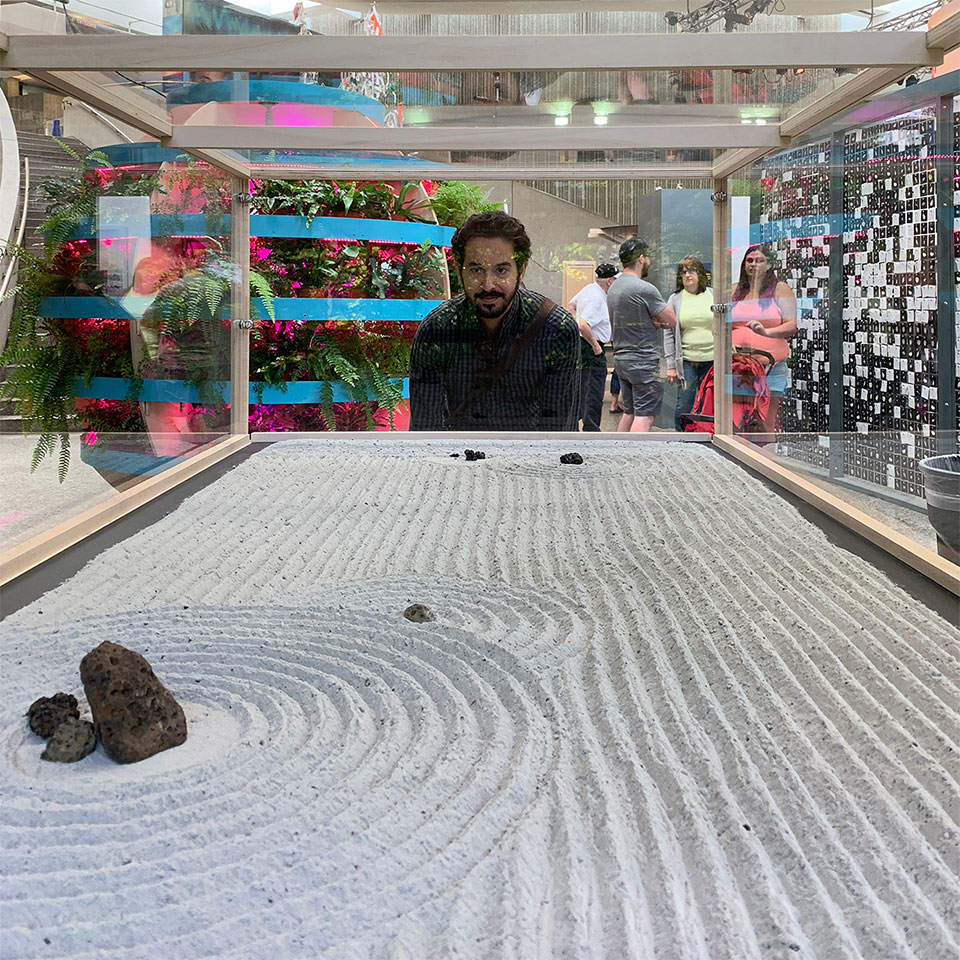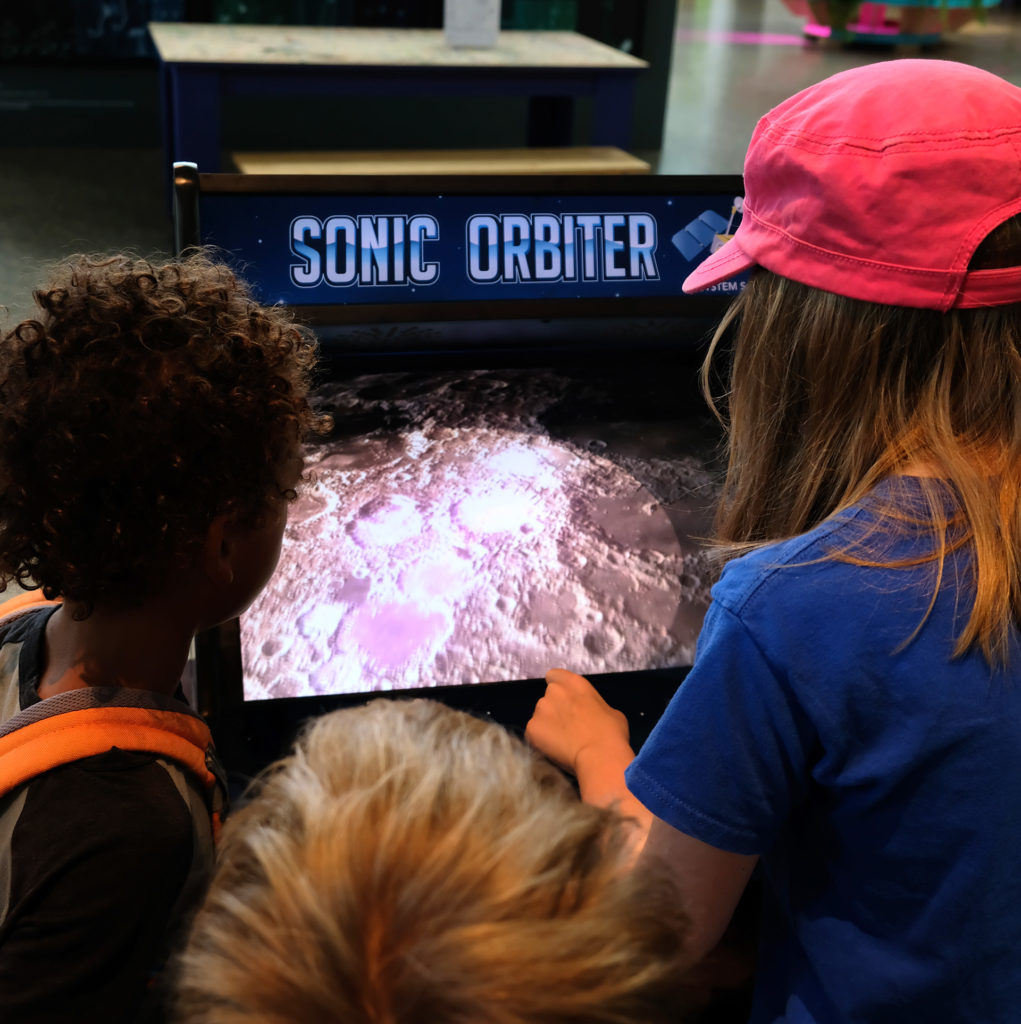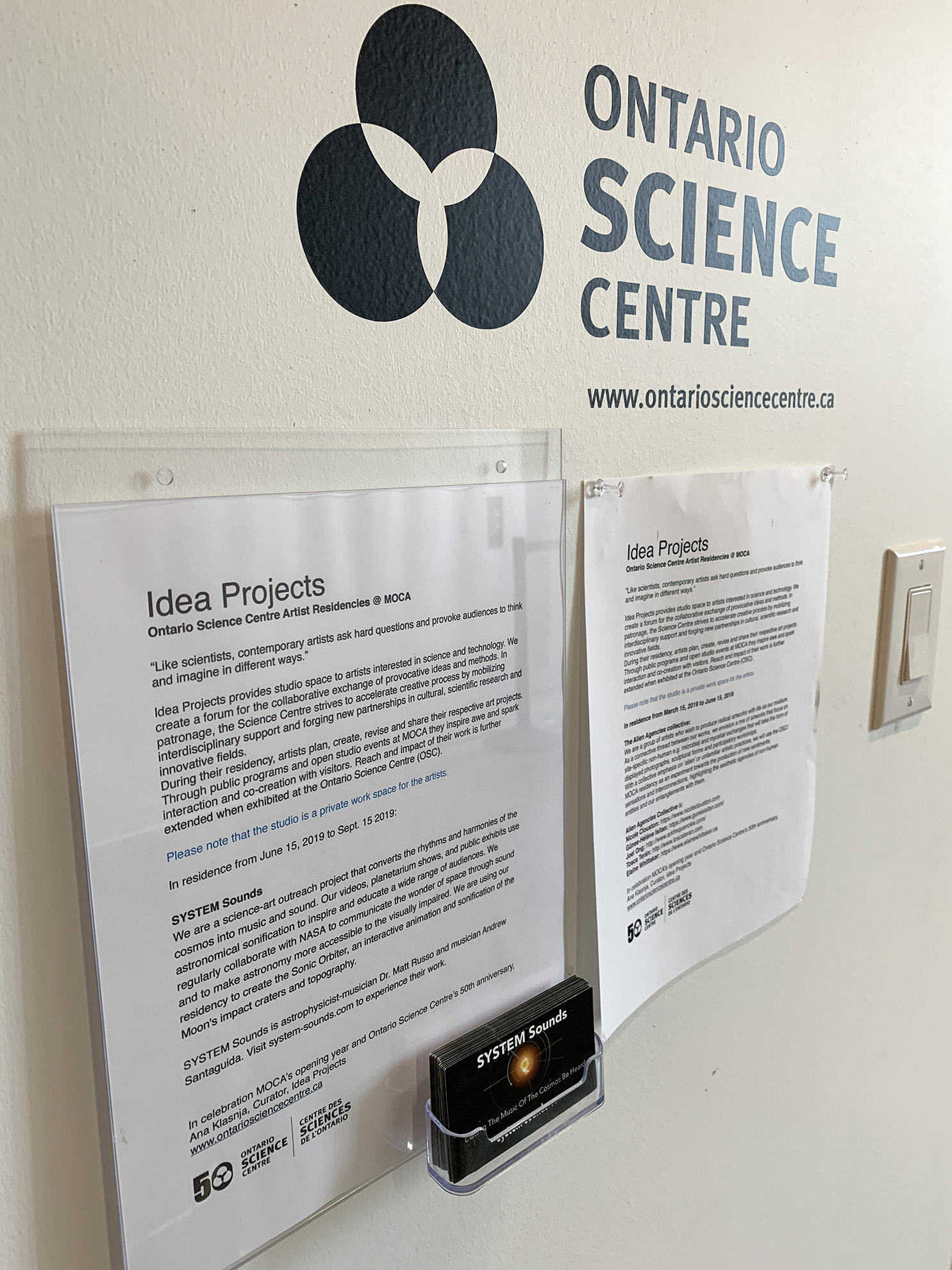MoCA/OSC Residency
We are currently artists in residence as part of the Idea Projects, a collaboration between Toronto’s Museum of Contemporary Art (MoCA) and the Ontario Science Centre (OSC). The residency offers us a 550 square foot studio space at MoCA from June until September to create an exhibit for the OSC.
Sonic Orbiter
For the first stage of the residency we have created the Sonic Orbiter, an interactive sonification of the Moon’s craters and topography. Using a joystick on a bartop arcade cabinet, you can steer the Lunar Reconnaissance Orbiter around the Moon while creating music by flying over craters. The craters produce different musical tones based on their size, with larger craters producing lower, louder notes and smaller craters producing higher, quieter notes. The sounds themselves are created by converting scans of the Moon’s topography directly into sound waves. The award-winning animation studio Thought Cafe have generously offered amazing artwork for the arcade cabinet. This project is supported by the International Astronomical Union’s Office of Astronomy for Development.
On July 20, 2019 we installed the Sonic Orbiter in the Ontario Science Centre’s great hall. Before we could even finish setting up the booth, a constant stream of kids became sonic lunar explorers, absorbed in the hunt for the largest crater. It will remain on display for at least one month and will be available for display at other science centres and museums. We also have plans for a second version that lets you explore the surface of Mars.
Lunar Rock Garden
Our co-artist in residence, Ekaterina Smirnova, has built a very zen lunar rock garden using a lunar regolith simulant. To accompany this work, we have created a soundscape based on a sonification of an altitude map of the Moon.As the Lunar Reconnaissance Orbiter circles the Moon, it collects the data on lunar surface topography using LOLA – the Lunar Orbiter Laser Altimeter. We converted the data into musical notes, with the lower lunar altitudes producing lower notes and higher altitudes producing higher notes. Rhythmic wind chimes and the sound of flowing water were incorporated to increase the zen.


Thanks to the International Astronomical Union’s Office of Astronomy for Development for their support!







